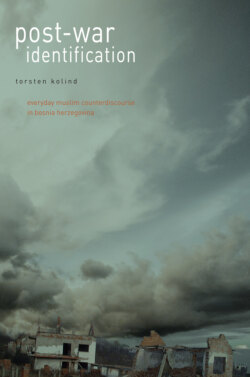Читать книгу Post-War Identification - Torsten Kolind - Страница 16
На сайте Литреса книга снята с продажи.
Instrumentality
ОглавлениеIn relation to the first part of the instrumentality/structure pair, the central argument is that violence does not occur randomly but is intended. Competition over scarce resources or competition for power does not automatically result in violence; rather violence is conceived as a deliberate outcome of conscious actors’ strategic considerations. Violence is an instrument or a source of social power; it is action taken in order to reach certain goals (Hardin 1995; Turton 1997; Schmidt and Schröder 2001; Jabri 1996) – a thought echoing Carl von Clausewitz’s famous dictum that war is politics by other means. When explaining the break up of Yugoslavia, for instance, such analyses have often highlighted the erosions of political power centres (both national and global) and explained violence as strategic action intended to cement or defend economic and political positions (Schierup 1991; Cohen 1993; Simić 1993; Malcom 1994; Nagengast 1994; Bennett 1995; Shoup 1995; Sofus 1996; Glenny 1996; Gallagher 1997; Gow 1997; Turton 1997; Brubaker 1998; Sunic 1998; Oberschall 2000).1
When discussing violence as a source of power, legitimacy becomes a central issue. Riches (1986) has argued that one reason why violence is a universal social and cultural resource is that “performance of violence is inherently liable to be contested on the question of legitimacy” (ibid. 11). Violent clashes in modern states – defined by their ‘legitimate’ monopolisation of violence (Giddens 1985) – could therefore be theorised as fights for or contestations of this legitimacy, as seen by the fact that often the very definition of the status of a conflict is strategically contested. For example, are we dealing with war, civil war, terror, defence or humanitarian intervention? The use of violence to contest legitimacy is usually accompanied by propaganda. In modern conflicts, the mass media have increasingly helped to create the demonic Other, on whom violence then turns (Allen 1999; Naughton 1994; Malešič 1993; Sofus 1999). Such propaganda often tends to produce a strictly polarised structure of ‘us-them’ that no-one can escape, that leaves no room for ambiguity, and where ‘our’ side is understood as morally superior (Löfving and Maček 2000; Schmidt and Schröder 2001). Discussing such propaganda, advocates of the instrumentalist perspective have often invoked it as an explicit critique of the so-called primordial perspective,2 though the primordial perspective is seldom clear-cut (in relation to the Balkans, however, see Mojzes 1994; Kaplan 1993).
The instrumentalist approach to violence sometimes fails to notice that even though violence is a possible power strategy for local elites, strategic action is affected by broader global systemic processes. Mass communication and mass immigration have made local identification problematic; and along with growth in the global weapons industry and the rise in long-distance nationalism, this has increased the very potential for conflict (Anderson 1992; Turton 1997). Another dimension that fits into the instrumentalist perspective but which is also often neglected is that wars, even if they are the outcome of strategic considerations, often create their own complex dynamic, inasmuch as war tends to develop into a kind of mental framework in which physical violence occurs. Bax (2000a; 2000b), for instance, describes how in Herzegovina already existing local conflicts escalate, change, and form their own dynamic in a war situation, because local leaders perceive the war as a framework for solving existing conflict by new means. War then comes to serve the different purposes of many actors, which may in turn account for the difficulties of putting an end to wars.
